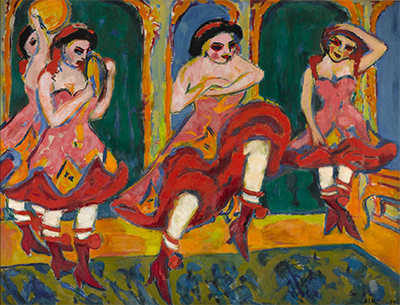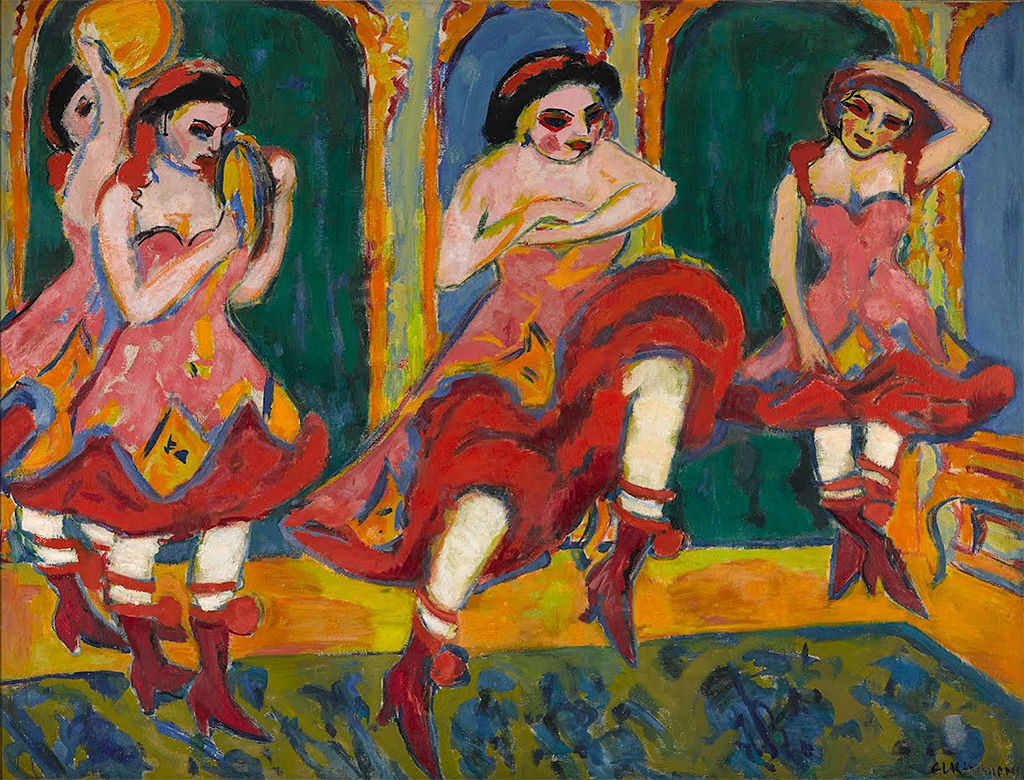This highly memorable painting by Kirchner displays two different periods of his career, having initially been completed in 1905 before he later returned in 1920 to make significant amendments and additions.
This lively composition features four dancers on stage, dressed in traditional outfits. Dance was a form of expression that appealed to Kirchner as a source of inspiration for his work but most other dancers that he depicted were of a more modern style. Czardas is the national dance of Hungary and often featured mixed couples together, though in this depiction it is purely women dancing as more of a show. It begins with the slow Lassu, before speeding up to finish with the Friss and is a fun and sociable dance that appeals very much to the masses. It is believed to have derived from a folk dance called the Magyar Kör.
The dancers are dressed beautifully, though Kirchner's style never used much detail. Those knowledgeable of this dance would be able to distinguish elements of their outfits more easily, where as the rest of us are left with more of an impression than a realistic portrayal of a social scene. We can make out red ankle boots with additional touches around the rim of their boots. They wear simple red cloth in their hair which helps to keep everything in place as they move around stage. Their dresses are predominantly pink and orange, with a red flurry of material underneath that appears whenever they kick their feet out, similar to the Can-Can. The artist then makes use of the same colours to create a pretty backdrop, completing their dance area.
The Gemeentemuseum in Den Haag, Netherlands own this piece after purchasing it back in 1955. This venue holds an excellent collection of prints, pottery, fashion, music and modern art. With regards their oil paintings, you will find great names featured within their highlights such as Piet Mondrian, Egon Schiele, Henri Le Fauconnier, Johan Jongkind plus prints from the careers of Ingres, Paul Klee and Toulouse-Lautrec. Den Haag, or The Hague as we sometimes refer to it in English-based languages, has a wealth of cultural spots to check out as well as venues of historic importance.





